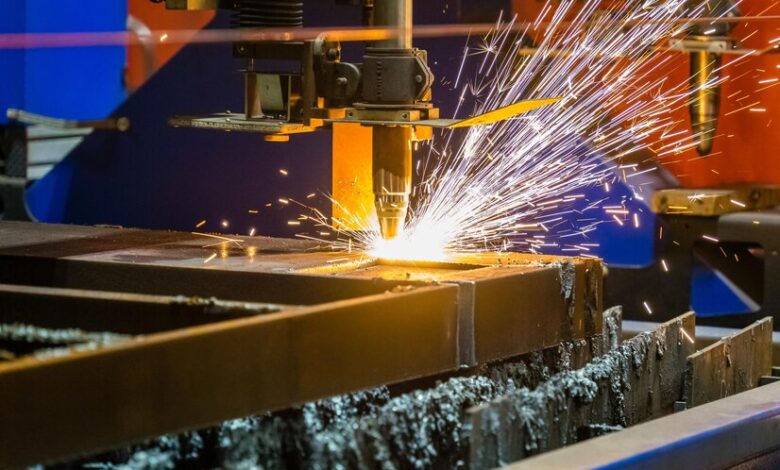Laser Cutting Materials Guide: What You Can and Can’t Cut

Laser cutting is a precise and efficient method used in various industries to cut or engrave materials into specific shapes or designs.
This technology relies on a high-powered laser beam that can cut through materials with precision, making it ideal for both industrial manufacturing and creative projects.
However, not all materials are suitable for laser cutting, and using inappropriate materials can damage the machine or produce hazardous fumes.
This guide will explore the materials that can and cannot be used in laser cutting, ensuring safety and effectiveness in your projects.
Materials Suitable for Laser Cutting
Laser cutting is a versatile technology suitable for a variety of materials ranging from metals to non-metals.
Each material requires specific settings and considerations to optimize the cutting process. This section explores both metallic and non-metallic materials that are effectively cut using laser technology.
Metals
1. Steel: Steel is one of the most commonly cut materials due to its durability and versatility. Laser cutting is ideal for both stainless and mild steel, typically up to 25 mm thick.
2. Aluminum: While aluminum is trickier to cut due to its high reflectivity and thermal conductivity, modern laser cutters can handle thin sheets effectively.
3. Brass and Copper: High-power lasers can cut brass and copper up to 6 mm thick. These materials require a precise setup due to their reflective properties.
Non-Metals
1. Wood: Wood like plywood, MDF, and solid hardwoods are great for laser cutting. The material thickness and the type of wood can affect the quality of the cut.
2. Acrylic and Plastics: Acrylic is ideal for laser cutting, yielding a smooth, flame-polished edge. However, care must be taken to avoid cutting PVC, which releases harmful chlorine gas when lasered.
3. Paper and Cardboard: Laser cutters can intricately cut paper and cardboard without direct contact, making them ideal for detailed designs and invitations.
4. Fabric: Natural fabrics like cotton, silk, and felt can be cut cleanly with lasers, which are used extensively in the textile industry for pattern cutting and engraving.
Materials That Should Not Be Cut with Lasers
Not all materials are suitable for laser cutting due to safety risks and potential damage to the equipment.
Certain materials can emit hazardous fumes, catch fire, or reflect the laser beam, posing significant dangers. This section details materials that should be avoided in laser cutting processes.
Hazardous Materials
1. PVC (Polyvinyl Chloride): PVC should never be cut using a laser cutter as it releases chlorine gas, which is harmful to human health and corrosive to the cutting machine.
2. Polystyrene Foam: Polystyrene foam can catch fire easily and emit toxic fumes when subjected to laser cutting.
Metals
Highly reflective metals such as mirror-finish stainless steel or aluminum are usually avoided in laser cutting as they can reflect the laser beam at the cutter, damaging it.
Other Materials
1. Fiberglass: Cutting fiberglass with a laser can release harmful fibers and fumes that are dangerous to inhale.
2. Coated Carbon Fiber: Similar to fiberglass, coated carbon fiber can produce toxic fumes and is thus unsuitable for laser cutting.
Key Factors in Choosing Laser Cutting Materials
Selecting the appropriate materials for laser cutting requires careful consideration of several key factors.
Material thickness, reflectivity, and thermal properties all influence the cutting process and outcome. This section discusses the essential criteria to ensure optimal cutting performance and results.
Material Thickness
The thickness of the material greatly influences the quality of the cut. Thicker materials require more powerful lasers and may not achieve the same level of detail as thinner materials.
Reflectivity and Thermal Conductivity
Materials with high reflectivity and thermal conductivity, such as some metals, can be challenging to cut because they reflect the laser beam away from the material or dissipate the heat too quickly.
Cutting Speed and Power Settings
Different materials require different cutting speeds and power settings. Adjusting these settings according to the material’s properties can help achieve optimal cutting results.
Safety Tips for Laser Cutting
Laser cutting involves specific safety measures to protect both the operator and the equipment. It is essential to ensure proper ventilation, use appropriate protective gear, and maintain regular upkeep of the machine. This section outlines critical safety tips for effective and secure laser cutting operations.
Proper Ventilation
Ensure that your laser cutter is in a well-ventilated area to avoid the accumulation of toxic fumes and smoke.
Use of Protective Gear
Wear protective gear such as safety glasses, gloves, and masks to protect yourself from direct exposure to harmful fumes and laser radiation.
Regular Maintenance
Regular maintenance of your laser cutter is crucial to ensure its longevity and safety. This includes cleaning the lenses and mirrors and checking the alignment of the laser beam.
Conclusion
Laser cutting is a versatile and powerful technology that can work with a wide range of materials.
However, understanding which materials are safe and effective to cut is crucial to ensuring the quality of your projects and the longevity of your equipment.
Always consult the manufacturer’s guidelines and adhere to safety standards to avoid hazards and ensure that your laser cutting endeavors are successful.
Whether you are working with metals, woods, or synthetic materials, laser cutting can provide precision and efficiency, turning your creative ideas into reality.



